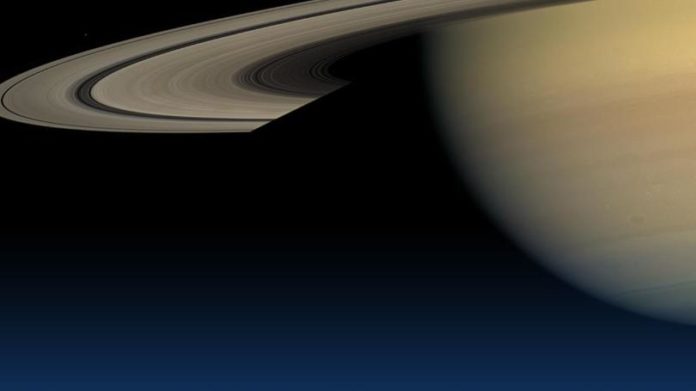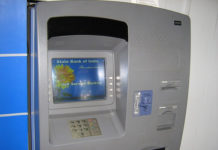NASA’s Cassini spacecraft faces one last critical and risky adventure around Saturn.
Cassini swings past Saturn’s mega moon Titan early Saturday for a gravity-assisted, orbit-tweaking nudge.
Cassini’s fuel tank is practically empty, so with little left to lose, NASA has opted for a risky, but science-rich grand finale.
“That last kiss goodbye,” as project manager Earl Maize calls it, will push Cassini onto a path no spacecraft has gone before,into the gap between Saturn and its rings. It’s treacherous territory. A particle from the rings,even as small as a speck of sand,could cripple Cassini, given its velocity.
Cassini will make its first pass through the relatively narrow gap Wednesday. Twenty-two crossings are planned, about one a week, until September, when Cassini goes in and never comes out, vaporizing in Saturn’s atmosphere.
Cassini–Huygens is an unmanned spacecraft sent to the planet Saturn.It is a Flagship-class NASA–ESA–ASI robotic spacecraft. Cassini is the fourth probe space to visit Saturn and the first to enter orbit, and its mission is ongoing as of April 2017. It has studied the planet and its many natural satellites since arriving there in 2004.
Development started in the 1980s,Its design includes a Saturn orbiter (Cassini) and a lander (Huygens) for the moon Titan.The two spacecraft are named after astronomers Giovanni Cassini and Christiaan Huygens.after an interplanetary voyage that included flybys of Earth, Venus, and Jupiter.
On December 25, 2004, Huygens separated from the orbiter, and it landed on Saturn’s moon Titan on January 14, 2005. It successfully returned data to Earth, using the orbiter as a relay. This was the first landing ever accomplished in the outer Solar System.
Saturn by Cassini
Cassini continued to study the Saturn system in the following years, and continues to operate as of April 2017.
“What a spectacular end to a spectacular mission,” said Jim Green, NASA’s planetary science division director. “I feel a little sad in many ways that Cassini’s discoveries will end. But I’m also quite optimistic that we’re going to discover some new and really exciting science as we probe the region we’ve never probed before.”
There’s no turning back once Cassini flies past Titan, Maize said. The spacecraft on Wednesday will hurtle through the 1,200-mile-wide gap between Saturn’s atmosphere and its rings, at a breakneck 70,000-plus mph.
From a navigation standpoint, “this is an easy shot,” Maize said. The operation will be run from NASA’s Jet Propulsion Laboratory in Pasadena, California. The concern is whether computer models of Saturn’s rings are accurate. On a few of the crossings, Cassini is “kind of flirting with the edge of where we think it’s safe,” he noted.
For at least the first trip through the gap, Cassini’s big dish antenna will face forward to shield the science instruments from any ring particles that might be lurking there. A couple instruments will provide a quick rundown on the dust situation.
Scientists anticipate lots of lightweight impacts, since the spacecraft will be going through extremely small material, more like smoke than distinct particles. Material from the innermost D ring,which is slowly extending into Saturn,should be diffuse enough “that we should be fine,” Maize said.
If the models are wrong and Cassini is clobbered by BB-size material, it still will end up exactly where NASA is aiming for on Sept. 15,at Saturn. The space agency wants to keep the 22-foot-high, 13-foot-wide spacecraft away from Titan and its lakes of liquid methane and from the ice-encrusted moon Enceladus and its underground ocean and spouting geysers. It doesn’t want to shower contaminating wreckage onto these worlds that might harbor life.
This last leg of Cassini’s 20-year, $3.27 billion voyage should allow scientists to measure the mass of the multiple rings,shedding light on how old they are and how they formed — and also to determine the composition of the countless ring particles. First spotted by Galileo in 1610, the rings are believed to be 99 percent ice; the remaining 1 percent is a mystery, said project scientist Linda Spilker. A cosmic dust analyzer on Cassini will scoop up ring particles and analyze them.

“Imagine the pictures we’re going to get back of Saturn’s rings,” Spilker said.
Cassini will have the best views ever of Saturn’s poles, as it skims its surface. Near mission’s end, Spilker said, “we’re actually going to dip our toe” into Saturn’s atmosphere, sending back measurements until the last possible moment.
Until September 2017 the Cassini probe will continue orbiting Saturn at a distance of between 8.2 and 10.2 astronomical units from the Earth. It takes 68 to 84 minutes for radio signals to travel Earth to the spacecraft, and vice versa.

























